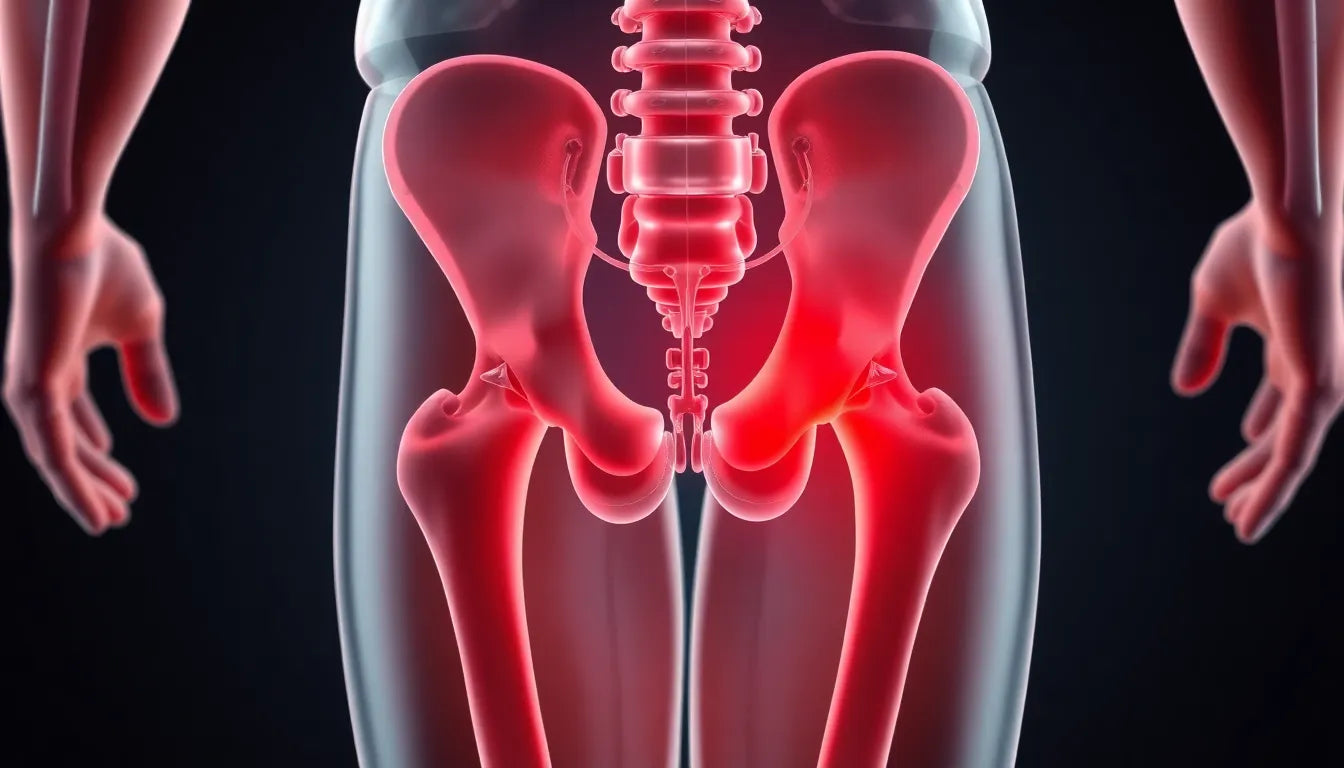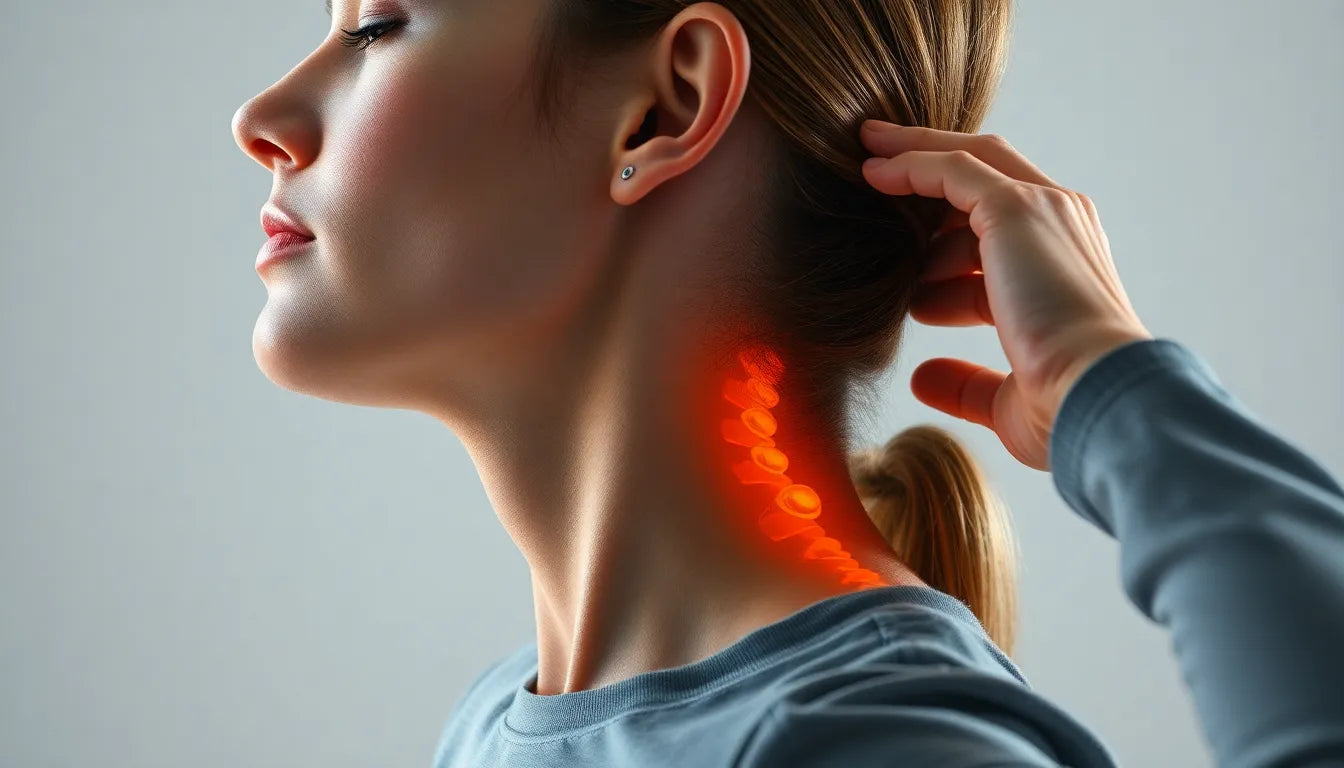Groin and hip pain are common issues that many people face, often without realizing how interconnected these two areas are. Due to their anatomical proximity, pain in one can often affect the other, creating a complex web of symptoms that can be challenging to unravel. This type of pain is prevalent across various demographics, from athletes who frequently push their bodies to the limit, to older adults who may be dealing with degenerative conditions. Understanding the causes and symptoms of groin and hip pain is crucial for effective management and treatment, offering a pathway to relief and improved quality of life.
Understanding the challenges of groin and hip pain
Diagnosing groin and hip pain can be particularly challenging due to the overlapping symptoms and shared nerve pathways. These complexities can make it difficult to pinpoint the exact source of the pain, which is why identifying the root cause is essential for effective treatment. Whether the pain stems from a musculoskeletal issue, such as a muscle strain or arthritis, or from more serious conditions like avascular necrosis or hernias, a precise diagnosis is key. Without it, treatments may address symptoms without resolving the underlying issue, leading to persistent discomfort and frustration.
Many individuals experience a combination of localized and radiating pain, making it even more difficult to distinguish between hip and groin pain. The symptoms can vary significantly, presenting as acute, sharp pain in cases of injury, or as a chronic, throbbing discomfort in degenerative conditions. Additional symptoms such as swelling, limping, or weakness can further complicate the diagnostic process. Medical imaging and thorough physical examinations are often necessary to accurately diagnose the source of the pain and tailor an effective treatment plan.
By understanding the intricate relationship between groin and hip pain, individuals can better navigate their symptoms and seek appropriate medical advice. This knowledge empowers them to make informed decisions about their health, ensuring they receive the most effective care possible. Addressing these challenges head-on is the first step towards conquering groin and hip pain, unlocking relief, and reclaiming an active, pain-free lifestyle.
Exploring the causes of groin and hip pain
Understanding the underlying causes of groin and hip pain is crucial for effective management and treatment. One of the most common musculoskeletal causes is muscle strain, particularly prevalent among athletes and individuals who engage in repetitive physical activities. This strain often results from overuse or acute injury, leading to localized pain and discomfort. Arthritis, including hip osteoarthritis, is another significant contributor, especially in older adults. This degenerative condition can cause persistent pain that worsens with activity and often radiates from the hip to the groin.
Bursitis and hip tendinitis are also frequent culprits, typically resulting from repetitive motion or pressure. These conditions cause inflammation in the bursa or tendons near the hip joint, leading to sharp, movement-linked pain. Additionally, labral tears and fractures, often due to trauma or twisting activities, can cause deep joint pain that significantly impacts mobility.
Beyond musculoskeletal issues, several serious conditions can lead to groin and hip pain. Avascular necrosis, for example, occurs when restricted blood flow causes bone tissue death, resulting in severe, constant pain. Hernias, characterized by the protrusion of abdominal contents, can also cause radiating groin pain. Moreover, internal conditions such as ovarian cysts or endometriosis in women, and spinal problems like sciatica or stenosis, may present with radiating pain to the hip and groin, complicating diagnosis and treatment.
Recognizing symptoms and their implications
Groin and hip pain can manifest in various ways, making it essential to recognize the symptoms for accurate diagnosis. Pain may be localized, affecting a specific area, or radiating, moving from the hip to the groin or vice versa. Acute injuries often present with sudden, sharp pain, while chronic conditions typically cause aching, throbbing, or persistent discomfort. Additional symptoms such as swelling, limping, or weakness may accompany the pain, depending on the underlying cause.
The complexity of these symptoms underscores the importance of distinguishing between hip and groin pain, as they often share overlapping nerves and anatomical structures. This overlap can make it challenging to pinpoint the original source of the pain, necessitating comprehensive medical imaging and physical examinations for accurate diagnosis. Understanding these symptoms and their implications is vital for tailoring an effective treatment plan that addresses the root cause rather than just the symptoms.
Overcoming diagnostic challenges
The diagnostic process for groin and hip pain can be fraught with challenges due to the intricate relationship between these areas. Overlapping symptoms and shared nerve pathways often complicate the identification of the pain's origin, making it difficult to distinguish between hip and groin issues. This complexity is why a precise diagnosis is crucial for effective treatment, as addressing only the symptoms without understanding the underlying cause can lead to persistent discomfort and frustration.
Medical professionals often rely on a combination of medical imaging and thorough physical examinations to overcome these diagnostic challenges. Imaging techniques such as X-rays, MRIs, or CT scans can provide detailed insights into the affected areas, helping to identify conditions like fractures, labral tears, or avascular necrosis. Physical examinations, on the other hand, can help assess the range of motion, identify areas of tenderness, and evaluate the presence of swelling or weakness.
By navigating these diagnostic challenges effectively, individuals can receive a tailored treatment plan that addresses the root cause of their groin and hip pain. This approach not only alleviates symptoms but also promotes long-term relief and improved quality of life. Understanding the causes, recognizing symptoms, and overcoming diagnostic hurdles are essential steps in conquering groin and hip pain, paving the way for a healthier, more active lifestyle.
Treatment strategies for groin and hip pain
Effectively managing groin and hip pain often requires a multifaceted approach, tailored to the underlying cause of the discomfort. For many individuals, conservative management is the first line of treatment. This can include rest and ice application to reduce inflammation and promote healing, particularly beneficial for muscle or tendon injuries. Physical therapy is another cornerstone of conservative management, helping to strengthen the surrounding muscles, improve flexibility, and restore range of motion.
Medications such as nonsteroidal anti-inflammatory drugs (NSAIDs) are commonly used to alleviate pain and reduce inflammation. In certain cases, corticosteroid injections may be recommended to provide more immediate relief for severe inflammation. Lifestyle modifications, including weight management and engaging in low-impact exercises like swimming or cycling, can also significantly benefit those suffering from chronic conditions like arthritis.
When to seek medical help
Recognizing when to seek professional medical help is crucial for effectively managing groin and hip pain. If the pain is severe, persistent, or accompanied by symptoms such as swelling, redness, or fever, a healthcare provider should be consulted. These could be signs of a more serious underlying condition that requires prompt medical attention. Additionally, if the pain significantly interferes with daily activities or sleep, seeking a professional evaluation is advisable.
Red-flag symptoms that necessitate immediate medical attention include sudden inability to bear weight on the affected leg, numbness or tingling, or if the pain follows a traumatic injury. Early intervention can prevent further complications and facilitate a quicker recovery.
Ergonomic aids and pain management
Incorporating ergonomic aids into daily routines can be beneficial for managing chronic groin and hip pain. Products such as supportive cushions, ergonomic chairs, and posture correctors can help alleviate pressure on the joints and reduce discomfort. These aids are particularly useful for individuals who spend long periods sitting or standing, as they can help maintain proper alignment and prevent strain.

Lumbar support belt
Provides back support and relief for lower back pain, ideal for daily activities and sciatica discomfort.
Additionally, using supportive footwear and orthotics can improve gait and reduce stress on the hips and groin. By integrating these ergonomic solutions, individuals can manage their pain more effectively and enhance their overall quality of life.
Visual aids for understanding pain
Visual aids, such as diagrams and charts, can be incredibly helpful in understanding the complex nature of groin and hip pain. Diagrams illustrating the anatomy of the hip and groin areas can provide insights into potential pain sources and their interconnections. Charts summarizing causes, symptoms, and treatment options can serve as quick reference guides, aiding in the identification and management of pain.
Frequently Asked Questions
What are the most common causes of groin and hip pain?
Common causes include muscle strain, arthritis, bursitis, and hip tendinitis. More serious conditions such as avascular necrosis, hernias, and labral tears can also contribute to pain in these areas.
How can I differentiate between hip and groin pain?
Hip pain often radiates from the hip joint itself, while groin pain may be more localized or radiate from the abdomen. Diagnostic imaging and physical exams are essential to accurately differentiate between the two.
What home remedies can help alleviate groin and hip pain?
Effective home treatments include rest, ice application, and gentle stretching exercises. Over-the-counter pain relievers like NSAIDs can also help reduce inflammation and discomfort.
When should I consider seeing a doctor for my pain?
If your pain is severe, persistent, or accompanied by symptoms such as swelling, numbness, or fever, it's important to seek medical evaluation. Additionally, if pain follows a traumatic injury or significantly impacts your daily activities, consulting a healthcare provider is recommended.
Are there any preventive measures for groin and hip pain?
Preventive measures include maintaining a healthy weight, engaging in regular low-impact exercises, and using ergonomic aids to support proper posture and alignment. Wearing supportive footwear and avoiding repetitive strain can also help minimize the risk of pain.

Men's Posture Shirt™ - Black
Stimulates muscles and may relieve pain or tension for improved posture and activity.
Källor
- Medical News Today. (n.d.). "Hip and Groin Pain."
- Healthline. (n.d.). "Groin and Hip Pain."
- Cleveland Clinic. (n.d.). "Groin Pain."
- The House Clinics. (n.d.). "Hip and Groin Pain."
- UChicago Medicine. (n.d.). "Hip Care."
- Bassett Healthcare Network. (n.d.). "Hip Pain."
- Cleveland Clinic. (n.d.). "Hip Pain."


















